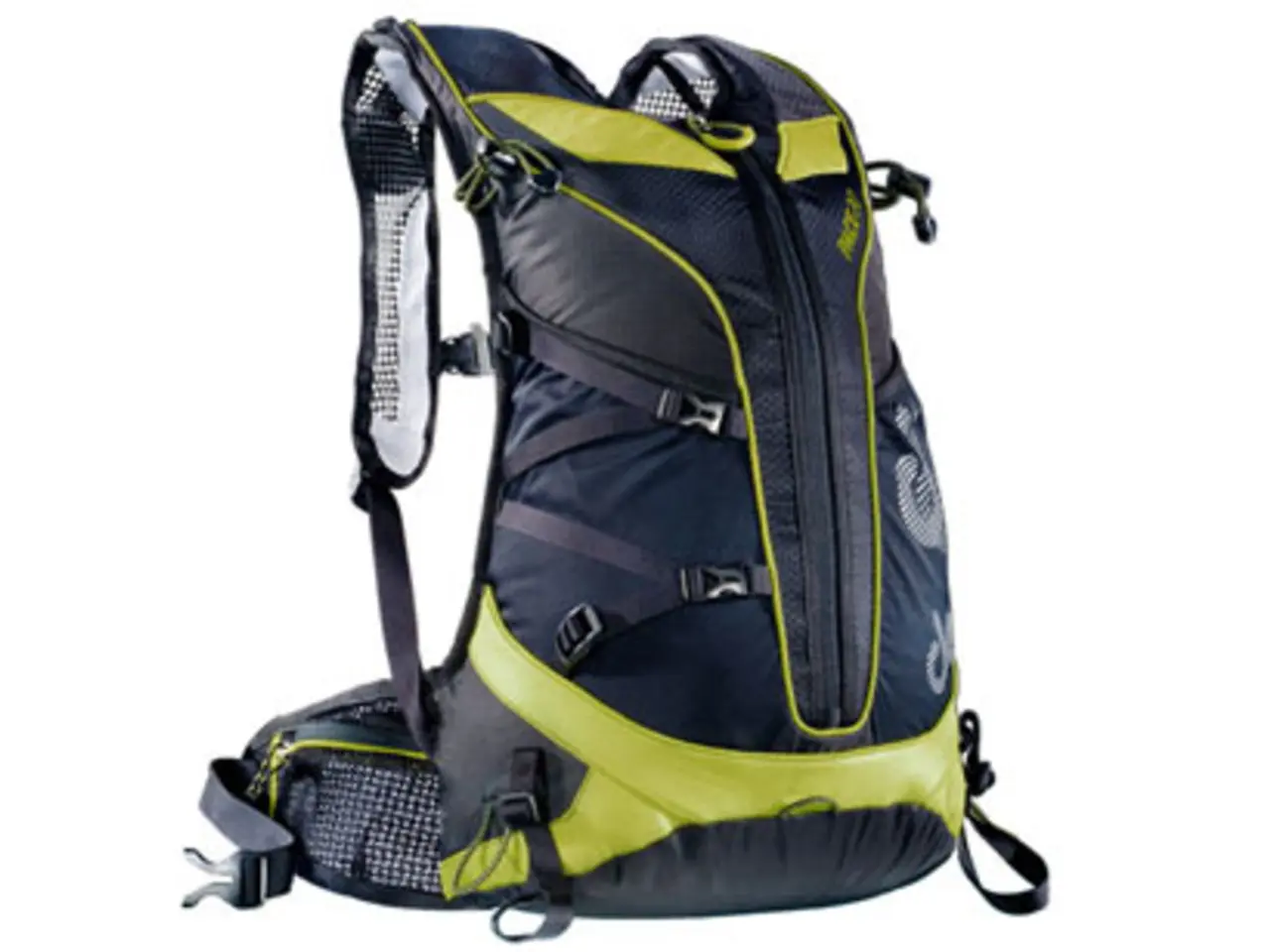Airplane Attire: Not Only Inconvenient but Also Risky
Health Risks of Certain Clothing Choices During Air Travel
Air travel has become a common part of American life, with flights ranging from local to transatlantic. However, choosing what to wear for a flight can be challenging, as clothing choices can impact health and safety. Aviation experts warn that certain outfits can contribute to serious health issues with long-term consequences.
One such risk involves restricted blood circulation, which can increase the risk of blood clots, worsen varicose veins, and cause nerve issues like numbness or tingling, especially during long flights. Wearing tight clothing such as skinny jeans, leggings, or form-fitting athleisure garments is strongly discouraged because they constrict blood flow, leaving blood stagnant and raising the risk of deep vein thrombosis (DVT), a potentially life-threatening condition while flying [1][3].
DVT can lead to life-threatening complications like pulmonary embolism if blood clots travel to the lungs. Reduced cabin pressure on flights can cause a condition called hypoxia, slowing blood flow and increasing the risk for clots [4].
For comfort and safety, passengers should avoid tight-fitting clothes that restrict circulation, high heels that are uncomfortable and impractical in a cramped cabin setting, and synthetic garments that do not breathe well or manage moisture poorly, since cabin air is dry and temperature fluctuates [2][4].
Recommended clothing includes loose, breathable garments made from natural fibers like cotton, merino wool, or modal, which allow proper air circulation and help regulate moisture and temperature inside the cabin [2]. Layered clothing, such as a breathable base layer, insulating middle layer (e.g., thin fleece or vest), and a light outer layer, enables easy adjustment to changing temperatures on board and in terminals [2][4]. Full-length trousers and long-sleeved tops protect from cabin hazards like hot surfaces, spills, abrasions, and loose debris [2].
For certain medical conditions (e.g., risk of lymphedema or blood clotting issues), wearing a graduated compression garment is recommended but only under medical supervision [5]. Stretchy, elastic-waisted pants or relaxed fit joggers can provide comfort and reduce the risk of circulation issues [6]. Loose, breathable clothing made from cotton, linen, or moisture-wicking modal can help keep you cool and reduce the risk of circulation issues during flights [7].
In summary, choose loose-fitting, breathable layers and avoid tight-fitting clothes to support good circulation, comfort, and safety during air travel. Layered outfits with natural fibers and practical footwear optimize comfort and preparedness for the cabin environment [1][2][3][4][5][6][7]. Fussy accessories like belt buckles or jewelry can complicate security checks or bathroom visits and add stress to the journey.
[1] "Deep Vein Thrombosis (DVT) and Air Travel." NHS, www.nhs.uk/conditions/deep-vein-thrombosis-dvt/air-travel/.
[2] "Air Travel: What to Wear." Healthline, 10 Nov. 2017, www.healthline.com/health/what-to-wear-on-a-plane#1.
[3] "What to Wear on a Long Flight." WebMD, 30 Jan. 2019, www.webmd.com/a-to-z-guides/what-to-wear-on-a-long-flight.
[4] "What to Wear on a Plane: Clothes for Comfort and Safety." Travel + Leisure, 24 Apr. 2019, www.travelandleisure.com/airlines-airports/what-to-wear-on-a-plane.
[5] "Deep Vein Thrombosis." Mayo Clinic, 16 Oct. 2019, www.mayoclinic.org/diseases-conditions/deep-vein-thrombosis/symptoms-causes/syc-20351725.
[5] "Compression Stockings for Flying: Do They Help Prevent DVT?" Healthline, 29 Aug. 2018, www.healthline.com/health/compression-stockings-for-flying-do-they-help-prevent-dvt.
[6] "What to Wear on a Long Flight." Travel + Leisure, 24 Apr. 2019, www.travelandleisure.com/airlines-airports/what-to-wear-on-a-plane.
[7] "What to Wear on a Long Flight." WebMD, 30 Jan. 2019, www.webmd.com/a-to-z-guides/what-to-wear-on-a-long-flight.
- For people with medical conditions like lymphedema or blood clotting issues, wearing graduated compression garments is recommended, but only under medical supervision.
- Stretchy, elastic-waisted pants or relaxed fit joggers can provide comfort and reduce the risk of circulation issues, making them suitable choices for air travel.
- In addition to long-sleeved tops and full-length trousers, loose clothing made from natural fibers like cotton, linen, or moisture-wicking modal can help keep you cool and reduce the risk of circulation issues during flights.
- To ensure comfort and safety during air travel, it's advisable to avoid tight-fitting clothes, high heels, synthetic garments, and fussy accessories, as they can restrict circulation or create inconveniences.




